Compare similar ETFs
 (R) S & P 600 Small Cap ETF
SLY
(R) S & P 600 Small Cap ETF
SLY
 Small-Cap Index Fund
VB
Small-Cap Index Fund
VB
 Core S&P Small-Cap ETF
IJR
Core S&P Small-Cap ETF
IJR
 Small-Cap Value Index Fund
VBR
Small-Cap Value Index Fund
VBR
 Small-Cap Growth Index Fund
VBK
Small-Cap Growth Index Fund
VBK
$85.46
 (R) S & P 600 Small Cap ETF
SLY
(R) S & P 600 Small Cap ETF
SLY
 Small-Cap Index Fund
VB
Small-Cap Index Fund
VB
 Core S&P Small-Cap ETF
IJR
Core S&P Small-Cap ETF
IJR
 Small-Cap Value Index Fund
VBR
Small-Cap Value Index Fund
VBR
 Small-Cap Growth Index Fund
VBK
Small-Cap Growth Index Fund
VBK
| Market Cap The market value of the company. It's calculated by multiplying the share price by the number of outstanding shares. | $5.01 Billion | |
| Dividend Yield Yearly payout to shareholders per share. The percentage indicates the payout in relation to the share price. | 1.88 % | |
| Beta Indicates the relationship between the price performance of a share and the market. | 1.1435 | |
| P/E Ratio Ratio between share price and earnings per share. A low ratio could indicate that the stock is undervalued or investors aren't expecting high growth. A high ratio could indicate that the stock is overvalued or investors are expecting high growth. | 86.02 | |
| Negative P/E Ratio a negative P/E ratio shows that the company is not profitable, and it shows how many years it would take the company to lose its entire market capitalisation if it did not change anything | -61.84 | |
| Profitable Companies | 77 | |
| PEG The ratio between the P/E ratio and the growth rate of the company's earnings per share in the last twelve months. A lower PEG could mean that a stock is undervalued. | 540.16 | |
| Price to Sales Ratio Market cap divided by the revenue in the most recent year. | 2.66 | |
| Price to Book Ratio Price to Book Ratio is the Market cap divided by the Book value of the company | 2.49 |
| Enterprise Value to EBIT Enterprise Value divided by EBIT | 26.14 | |
| Enterprise Value to Revenue Enterprise value divided by revenue | 5.49 | |
| Total Debt to Enterprise Value Total debt divided by enterprise value | 0.25 | |
| Debt to Equity A higher ratio indicates a higher risk. However, the ratio is difficult to compare between industries where common amounts of debt vary. | NaN | |
| Profit Margin Net income divided by revenue of the last 4 quarters. It indicates the company's profitability. | NaN% | |
| Quarterly Earnings Growth (YoY) The rate at which the company's net income has increased to the same quarter one year ago. | - | |
| Return on Equity Equity divided by market cap. | NaN% | |
| Return on Assets Indicates a company's profitability in relation to its total assets. | NaN% | |
| Return on Invested Capital Return on invested capital (ROIC) is net income after dividends divided by the sum of debt and equity. It shows how effective a company is at turning capital invested by shareholders and other debtholders into profits. | NaN% |
| Finance | 20.0% |
| Technology | 14.5% |
| Industrials | 12.7% |
| Healthcare | 11.9% |
| Consumer Discretionary | 10.7% |
| Consumer Staples | 5.0% |
| Materials | 4.6% |
| Other | 4.5% |
| Real Estate | 4.0% |
| Energy | 3.8% |
| Utilities | 2.1% |
| Telecommunications | 1.7% |
| Consumer Cyclical | 0.2% |
| N/A | 4.3% |
| Micro Cap | 4% |
| Small Cap | 38% |
| Mid Cap | 48% |
| Large Cap | 10% |
| Mega Cap | 0% |

MDY

RMBS - Manufacturing
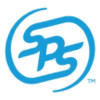
SPSC - Information

AIT - Wholesale Trade

ENSG - Health Care and Social Assistance
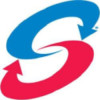
FIX - Construction

ATI - Manufacturing

ABG - Retail Trade

ACLS - Manufacturing
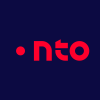
ONTO - Manufacturing
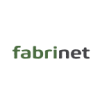
FN - Manufacturing

NSIT - Wholesale Trade

MTH - Construction

AJRD - Manufacturing
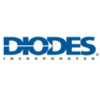
DIOD - Manufacturing

MMSI - Manufacturing

MLI - Manufacturing

ELF - Retail Trade

BCPC - Manufacturing

AAON - Manufacturing

LTHM - Manufacturing

HP - Mining, Quarrying, and Oil and Gas Extraction

FUL - Manufacturing

AEIS - Manufacturing